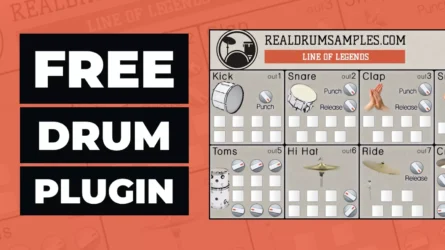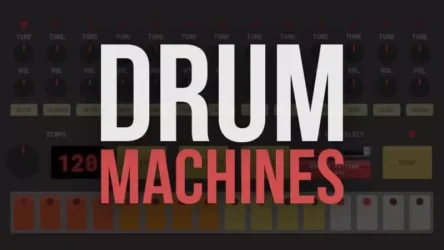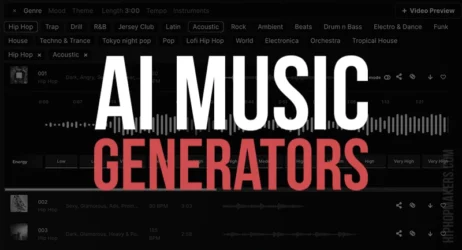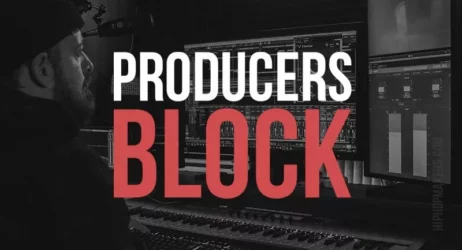Here we will answer what is a Tempo in music, the different types of tempos, their meanings, and we will provide examples of how tempos are used in music.
What Is A Tempo In Music?
A tempo is the speed at which a particular piece of music is played. Tempo is generally indicated at the start of the piece of music, often using conventional Italian terms, and it is measured in beats per minute (BPM).
- What is a Tempo in Music
- An Example of Tempo in Music
- Types of Tempo In Music
- What Are Tempo Markings
- What is an Allegro Tempo
- What is an Andante Tempo
- What is a Moderato Tempo
- What is a Largo Tempo
- Tempo vs. BPM
- How Do I Find a Song’s Tempo
What is a Tempo in Music?
A tempo is how fast the beats go by in a particular piece of music. If a song is said to be having a faster tempo, then it means the beats are moving faster. On the other hand, a slow tempo means the song is slower.
A tempo in a music piece can be indicated by either indicating a precise number of beats per minute or using traditional Italian terms.
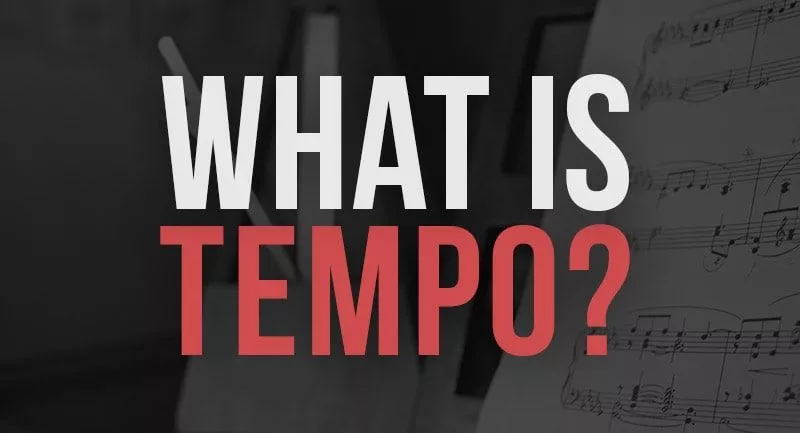
Let’s discuss them both:
1. Beats Per Minute (BPM)
Indicating the tempo of a piece using the BPM is the most accurate way.
It gives you the precise speed of your song, which can become helpful, especially if you choose to use a metronome device or a click track on your computer.
A metronome is a device that ticks off beats after beats at a specified tempo.
So when you set up your metronome or click on a particular BPM number, then it will tick off back and forth at the proper speed. Therefore, when you play along with the metronome or click track, you are playing at the right tempo.
‘Beats Per Minute (BPM)’ is the measure of how many beats would be happening in one minute in a particular piece of music.
To indicate the BPM of a piece of music, firstly, the note, like a whole or a half note, is denoted, and then it is followed by a number.
Related: Best Free Online BPM Finders
2. Italian Tempo Terms
Another way to find a tempo in music is by using traditional Italian musical terms. You will find an explanation for the different Italian tempo terms below.
What is An Example of Tempo in Music?
In simple words, the tempo is nothing but the speed of the music piece.
If there are a greater number of beats in a piece of music per minute, then there will be less time between each successive beat, and as a result, the piece of music will be played fast.
For example, if a tempo is notated at 120 BPM, it means 120 beats will be happening in one minute.
While if the tempo of a piece of music is notated at 60 BPM, then it would mean 60 beats in one minute.
Thus the tempo of 120 beats per minute will be twice as rapid as the tempo of 60 beats per minute.
What Are the Types of Tempo In Music?
| Tempo Term: | BPM: | Meaning: |
| Grave | (25–45 bpm) | Very slow |
| Largo | (40-60 bpm) | Slow and broad |
| Lento | (45–60 bpm) | Slow |
| Larghetto | (60–66 bpm) | Rather slow and broad |
| Adagio | (66–76 bpm) | Slow with great expression |
| Andante | (76–108 bpm) | At a walking pace |
| Moderato | (108–120 bpm) | At a moderate speed |
| Allegro | (120–156 bpm) | Fast, quick, and bright |
| Vivace | (156–176 bpm) | Lively and fast |
| Presto | (168–200 bpm) | Very, very fast |
| Prestissimo | (200 bpm and over) | Even faster than presto |
Source
Some music retains the same tempo throughout. At the same time, other pieces of music speed up and slow down to create a dramatic effect.
What Are Tempo Markings?
Tempo Markings allows us to know about the tempo at which music composers want the songs to be performed.
The tempo markings are generally written as words that correspond with a number of beats per minute format. For instance, a musician can write either Allegro (which means fast) or write 120 bpm.
Suppose a tempo change is immediate in a song, directly going from one tempo to another without any transition. In that case, the change is also indicated by inserting a new tempo marking of choice.
Example: If a song is played at 120 BPM and you want to switch it to a faster tempo, let’s say 160 bpm, then all you need to do is just insert a new 160 bpm tempo mark. If you are using the Italian tempo marking, you can also just insert it where you want the rhythm to change.
But if there’s a case where you would like to gradually speed up or slow down the tempo, then there are other Italian markings that can be used for this purpose. For example, the term ritardando means gradually slowing down the tempo, while the term accelerando means gradually speeding up the tempo.
Here’s a table that shows some of the tempo-changing markings that you are likely going to see in the piece of music:
| Term: | Meaning: |
| ritardando | Gradually slow down |
| rallentando | Gradually slow down |
| ritenuto | Hold back the tempo |
| accelerando | Gradually speed up |
| doppio movimento | Twice as fast |
| tempo primo | Resume the original tempo |
Source
What is an Allegro Tempo?
Allegro tempo means fast, quick, and bright, and its bpm ranges from 120–156 bpm. It is one of the Italian terms used to denote the tempo of the piece of music.
What is an Andante Tempo?
An Andante tempo means at a walking pace and its bpm ranges from 76–108 bpm.
What is a Moderato Tempo?
A moderato tempo means a moderate speed, and its tempo range is 108–120 bpm.
What is a Largo Tempo?
A Largo tempo means slow and broad. Its tempo range is 40-60 bpm.
What’s the Difference Between Tempo & BPM?
| Tempo: | BPM: |
| Tempo means how fast or how slow a piece of music is being played. | BPM means how many beats are occurring in a piece of music in one minute |
| Tempo is the concept that tells about the speed of the piece of music. | BPM is the measurement used to indicate the tempo of a piece of music. |
How Do I Find a Song’s Tempo?
Finding a song’s tempo, which basically means being able to figure out the BPM of any song, is important, especially for the DJ.
They are supposed to smoothly blend the end of one song into the beginning of another song without any awkward or odd transition.
Figuring out the BPM of any song enables them to know whether to bring the tempo up or down in order to play both at the same speed.
There are two ways to find out the beats per minute of a song. Either use the old-fashioned way of counting with ears and a stopwatch or just make use of any software.
Summary of Tempo
Tempo refers to the speed at which a piece of music is playing. In music, the tempo is generally indicated at the beginning, usually using Italian terms, and it is expressed in beats per minute.
Understanding the concept of tempo in music is integral to playing music accurately and expressively. In classical music, tempo indications, often represented by traditional Italian markings, are found at the beginning of a musical score. These provide guidelines on the actual speed at which the piece should be performed, ensuring a consistent speed throughout.
However, the tempo is not always a rigid rule. Musicians have the liberty to use their own tempo in certain musical contexts, allowing for free adjustment, and often, a piece will include both a tempo indication and specific tempo changes. These can include getting slightly faster or slower or a gradual slowing (slower meno moto). In fact, music history is filled with examples of pieces that sound completely different when performed at different tempos.
Basic tempo markings, such as “moderately slow” or “extremely slow”, refer to a general pace, but for more precision, a metronome marking is used. This numerical value relates directly to a quarter note in most cases and determines the number of beats in a minute (BPM). From the solo introduction to the rhythmic pattern, it’s important to practice playing at the correct tempo to convey the desired mood and energy of the piece.
Moreover, tempo instructions are commonly paired with time signatures in sheet music. This helps determine the rhythmic pattern of a piece, indicating how many beats there are in a measure and the note value of each beat. Composers often use one or more words to give additional cues about the tempo or the character of the music.
Tempo is important in both the performance and perception of music. Musical tempos range from slightly slower to a bit faster, contributing to the unique character of different pieces. Whether you’re an aspiring musician studying common tempo markings or a seasoned performer interpreting the decreasing tempo in a poignant symphony, understanding tempo in music will help you truly connect with the score and your audience.
I hope you found this information on tempos in music helpful.

